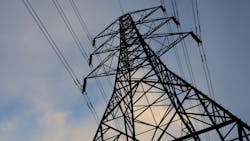Report by The Brattle Group and CATF Identifies Near-Term Solutions to Address Rising Electricity Demand
A new report from The Brattle Group, commissioned by the Clean Air Task Force (CATF), outlines a suite of near-term actions to help utilities, grid planners, and policymakers respond to a sharp rise in electricity demand—driven by data center growth, electrification, and domestic manufacturing expansion.
As traditional pathways for adding generation—such as renewables, battery storage, and gas—face delays due to permitting, procurement, and construction hurdles, the report identifies underutilized strategies that can be deployed quickly to maintain reliability while supporting clean energy and affordability goals.
Titled Optimizing Grid Infrastructure and Proactive Planning to Support Load Growth and Public Policy Goals, the report emphasizes the need to optimize the current grid, streamline the connection of new loads and resources, and improve planning and procurement processes. Its authors argue that focusing on readily available tools can help relieve short-term pressure on the grid and keep long-term energy and economic goals on track.
“Decision makers are under significant pressure to deliver affordable, reliable electricity to meet rapidly growing load right now,” said Kasparas Spokas, Electricity Program Director at CATF. “This report identifies many immediate and pragmatic actions that remain underutilized.”
Johannes Pfeifenberger, a principal at The Brattle Group and co-author of the report, added that effective responses to load growth will require “considerable effort, coordination, and collaboration” from utilities, regulators, and policymakers.
Key Recommendations:
-
Maximize use of existing infrastructure through rapid deployment of advanced grid technologies like grid-enhancing technologies (GETs), expanded use of virtual power plants, and improved interregional power trading.
-
Accelerate connections for new loads and resources by reforming interconnection processes, co-locating generation and demand in “energy parks,” and supporting self-supply models for large customers.
-
Adopt proactive, scenario-based planning to identify cost-effective infrastructure investments that align with clean energy and economic development objectives.
-
Protect affordability and equity through smart rate design, demand-side incentives, and expanded bill assistance for low-income customers—especially as large, energy-intensive loads like data centers continue to scale.
The report warns that without faster deployment of such measures, electric demand could outstrip capacity in some regions, risking reliability and delaying broader electrification and decarbonization goals.
“Nearly 70% of transmission lines are over 25 years old, and many proven solutions—like grid-enhancing technologies and proactive planning tools—remain underused,” said Nicole Pavia, Director for Clean Energy Infrastructure at CATF. “We need to act now to meet rising demand while preparing the grid for the clean energy transition ahead.”
The full report includes case studies and detailed recommendations designed to address today’s planning and policy constraints.
